Jessica's Blog
Friday, June 18
Final Post For Commtech 2O1O.
Communication is headed to new more improved technology. Every year we come out with new communication devices, and almost every month we improve them. I think there will be many new communication and technology devices that will make today's devices look 'pathetic'. Just as we think the technology in the last 100's looks pathetic. It will take time for these new devices but how we're going now, we can invent these devices from learning what we have now and new ideas.
How will you be communicating when you finish post secondary education or in 5 years time?
I will be communicating through the laptop and cellular device in 5 years time. It would awesome to communcate through a hollographic frame coming out of a small device though, to make things easier and to carry it. I think maybe a watch that has the hollogram frame would be awesome too.
Friday, June 11
Friday, June 4
Blogpost for Friday the 4th -

Thursday, May 27
Blogpost for Friday the 28th!
Chapter 8 - Video Editing
1. Describe how digital video editing evolved starting in the 1990's.
2. There are three types of editing methods. Name each of them and describe when you would use each type.
The three editing methods are;
i) Edit as you shoot - always allow for the short delay between the time you press the record button and when the camcorder actually starts, look around to see where the light is coming from, always use a tripod, plan out camera movements, plan out types of shots, leave ten seconds of footage before each shot and after each shot, and walk through the scene so you get an idea of what the shot is about.
ii) Tape editing - an inexpensive storage medium and editing long productions can go quicker.
iii) Computer editing - affordable that even the average consumer can produce a professional looking video with their home computer. All you need is a computer capable of handling fast speeds and a capture card is needed.
3. What are the features needed on a computer in order to perform digital video editing. Give a comprehensive list and descriptions.
4. What information is contained on the Edit Decision List?
5. Define Editing Style. What are the 2 types of editing styles outlined in this chapter? Give 2 characteristics for each of these styles.
Editing style is the distinct way in which an editor makes decisions about length of cutsm which shots should follow each other, and the overall look of the video.
6. When considering pace in a video what must be considered? Give four points on how you know when to edit with a slow pace and four points for a fast pace.
7. When editing as you shoot, there are many points to remember. Name at least 3 of these pointers and explain why each of them is important to remember.
Friday, May 21
Blogpost for Friday the 21st;
 I'm currently trying to find a picture of the school for the video on google but I can't find one. Neither on the google map.
I'm currently trying to find a picture of the school for the video on google but I can't find one. Neither on the google map.Tuesday, May 11
Blogpost for Friday the 14th -
CHAPTER 6 PRODUCTION PROCESS QUESTIONS & ANSWERS
1. There are there stages to the production process. Name each of these stages and give a brief description of what is done in each.
Pre-Production - the planning stage of the production process.
Production - when you actually videotape or collect raw footage for your video.
Post-Production - video & audio editing, soundtrack composition, marketign & advertising
2. Draw and label the different parts of the storyboard.


5. There are four hints to remember during production. Name and describe each of these hints.
Rehearsing - have the talent run through the part a few times. The director should go over all of the different jobs and make sure they know what they're doing. Everyone should be ready to go and shoot.
Set Up Your Shots - make sure the camera is not pointing at the window itself. White balance the camera so that it knows what the colour white looks like in each new lighting situation. Make sure all angles are covered.
Take Extra of Everything - pack extra of everything; this includes microphones, cables, batteries, stands, and even another camera if you can.
Schedule, Schedule, Schedule! - all of the parties involved should be notified of dates, times, and what they need to bring with them. Rememebr to leave enough time for the post-production stage of the process. Editing your video will take time so plan out your video well.
6. Name the three aspects of post-production.
The three aspects of post-production are;
1. Video & Audio Editing
2. Soundtrack Composition
3. Marketing & Advertising
7. You are about to start marketing and advertising a new action movie called Total Impact. Come up with 5 creative marketing and advertising ideas to sell the movie.
5 ways to promote a new movie and to sell it, is by; producing television commercials, movie posters, banners, and standup displays, and toys.
- - -
I also finished my logos. They look like this:


Friday, May 7
Blogpost for May 7th -
 I also made a Korah Colts small Logo. It looks like this;
I also made a Korah Colts small Logo. It looks like this;
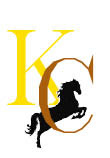 On Wednesday I continued to work on my logo. I looked up the word Voyageurs to get an idea, and the background information on the school. I couldn't find much. Today I will continue to work on the Logo assignment.
On Wednesday I continued to work on my logo. I looked up the word Voyageurs to get an idea, and the background information on the school. I couldn't find much. Today I will continue to work on the Logo assignment.
Thursday, April 29
Blogpost for Thursday the 29th -

And turned it into this;

On Wednesday I started to work on the background for my Independent Project. So far I have the lockers and a school door. I have to cut them out and place them on a hard surface, like cardboard, to even stand it up.
Today is Thursday and I will continue to work on my Independent Project. I'm going to cut out the lockers and the door, and place them together. I will also make the small things for my aliens, like backpack/books.
Tomorrow is Friday and it's a PD day!
Monday, April 26
Blogpost for Friday the 23rd -
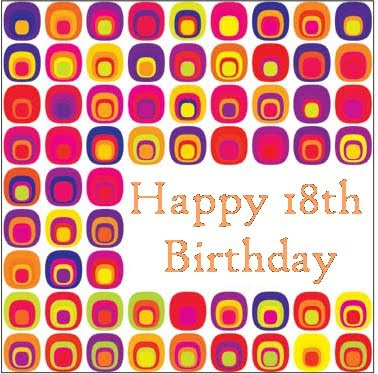 to meeee!
to meeee!Friday, April 16
Blogpost for Friday the 16th!
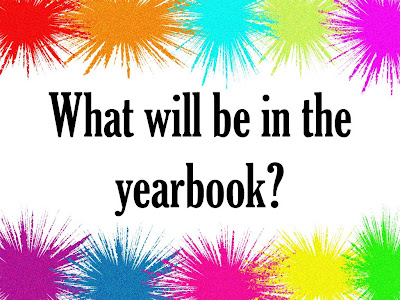
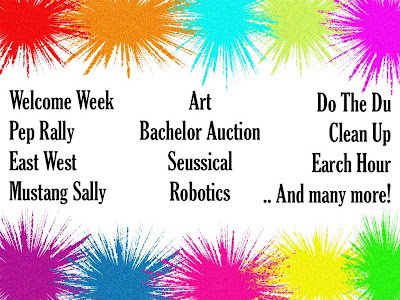
I will then put pictures from the yearbook after each slide like this.
This week we also were to work on our Independent Projects. I need to make my characters and get the backgrounds down.
Friday, April 9
Blogpost for Friday the 9th.
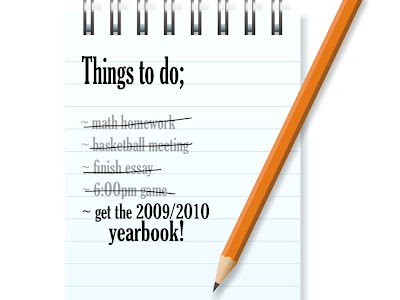
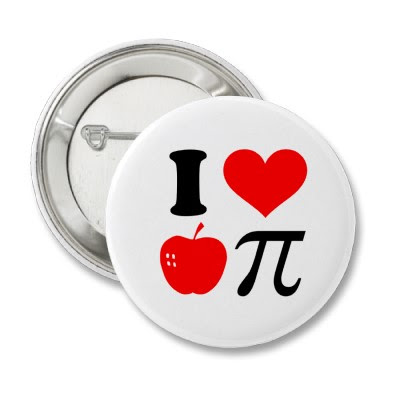 But the apple above ^ is actually an green apple mac icon.
But the apple above ^ is actually an green apple mac icon. Thursday, April 1
Blogpost for April the 1st ;

Sunday, March 28
Blogpost for Friday the 26th;
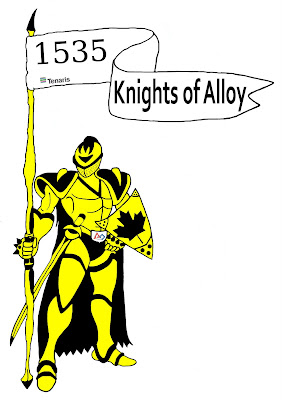
I also created two buttons. One school related and one of a favorite quote. They look like;


We also received a small opinion work sheet. It's about a girl who uses her interest in photography, fashion, and her education in english to create a blog. The questions that went along with the assignment about the article are;
Will she be successful in her blogging quest to build a career?
I think Yarhi will be successful in her blogging quest to build a career because both her parents work in film and she has been noticed by many people.
Is a blog a good avenue to use as a portfolio of your abilities?
A blog is a good avenue to use as a portfolio for your abilities because it is worldwide and many people use the net and blogs. I think that if you use a blog you should also copyright your images and such so no one can steal them.
Why did she create a blog?
Yarhi created a blog to showcase her writing and her photography as well as spotlight what she believed was Toronto's colourful but largely overlooked world of street fashion.
Has the blog opened doors for her?
The blog has opened doors for her because she was profiled in shopping magazine Loulou. Much Music produced a three minute segment on her as a street photographer, which led to a gig as the station's correspondent for Toronto Fashion Week. Elle Canada hired her to do street style photo shoots, and her reputation came to the attention of editors at the alternative weekly, NOW.
How does she promote her blog?
She promotes her blog by publishing it to the world on the internet for everyone to see.
Wednesday, March 10
Blogpost for Thursday the 11th!
- photography (black and white 35mm on display),
- photography (digital on yearbook spread),
- multi media (interactive tour of Korah),
- video (editing),
- animation (stop motion, computer animation),
- screen printing (adobe illustrator),
- desktop publishing (school newsletter, yearbook spread),
- web page design (HTML, dreamweaver),
- audio visual (presentations slideshow, irfanview), and
- display (for display cabinet).
We also received out updated marks and I currently have a 70, and I am not ecstatic about it. This week I have also worked on the robotics logo still, and started to work on screenprinting designs.
Friday, March 5
Blogpost for Friday the 5th --
Today we received a Digitial Terms sheet with terms for our next wednesday quiz. They are;
Resolution - The number of pixels in an image.
Pixel - (PICture ELement) The smallest element of a digitized image.
Megapixel - A unit equal to one million pixels.
PPI - Pixels Per Inch; the number of pixels per inch.
Megabyte - Computer memory consisting of about one million bytes.
Kilobyte - Computer memory consisting of about one thousand bytes.
Byte - Eight bits of computer data.
Bit - A tiny amount of computer data.
JPEG - Joint Photographic Experts Group.
LCD - Liquid Crystal Display.
Memory Card - A storage device used to store data.
Digitize - To convert analog information into digital format.
Gigabyte - Computer memory consisting of one billion bytes.
Monday, March 1
Blogpost for Friday the 26th

We also copied down terms off the board, the 6 principles of design.
Balance; Try walking a long distance with a 2 pound bag of rocks in one hand and a 10 pound bag or marbles in the other. After awhile you'll be wanting to shift your load around, putting a few marbles in the rock bag to balance your load, making it easier to walk. This is how balance works in design. Visual balance comes from arranging elements on the page so that not one section is heavier than the other. Or, a designer may intentionally throw elements out of balance to create tension or a certain mood.
Proximity / Unity; Observe a group of people in a room. You can often learn a lot about who is listening intently to another person, which are strangers, or who is ignoring who by how close together they sit or stand. In design, proximity or closeness creates a bond between people and between elements on a page. How close together or far apart elements are placed suggests a relationship (or lack of) between otherwise disparate parts. Unity is also achieved by using a third element to connect distant parts.
Alignment; Can you imagine how difficult it would be to find your car in a crowded parking lot if everyone ignored the parking lot stripes and parked in every which direction and angle? Imagine trying to get out of there! Alignment brings order to chaos, in a parking lot and on a piece of paper. How you align type and graphics on a page and in relation to each other can make your layout easier or more difficult to read, foster familiarity, or bring excitement to a stale design.
Repetition / Consistency; What if stop sign came in pink squares, yellow circles, or green triangles, depending on the changing whims of a town and a few of its residents? Imagine the ensuing traffic jams and accidents. Repeating design elements and consistent use of type and graphics styles within a document shows a reader where to go and helps them navigate your designs and layouts safely.
Contrast; On the basketball court, one pro team looks much like another But send a few of those players for a stroll down most any major city street and something becomes apparent -- those players are much taller than your average guy on the street. That's contrast. In design, big and small elements, black and white text, squares and circles, can all create contrast in design.
White Space; Did you ever participate in that crazy college pasttime of VW Beetle stuffinf? Were you ever the guy on the bottom struggling for a breath of fresh air or the last one in trying to find a place to stick your left elbow so the door will close? It wasn't comfortable, was it? Imagine trying to drive the car under those conditions. Designs that try to cram too much text and graphics onto the page are uncomfortable and may be impossible to read. White space gives your design breathing room.
Monday, February 22
BlogPost for Friday the 19th
Chapter 13 Questions & Answers:
1. Identify and describe the 6 principles of design.
The 6 principles of design are;
Rhythm - is repitition. Rhythm occurs when a certain element is repeated. Rhythm can add movement to a design, looks like something is happening.
Balance - an impression of steadiness created by placing all the elements of a design in a certain way.
Proportion - the size relationship of one part of a design to another.
Variety - difference; adds interest and excitement to a graphic design.
Emphasis - making one element in a design stand out.
Harmony -the effect achieved when the various elements of a message design work well together.
2. What are the six major styles of type?
The six major styles of type are roman, square serif, sans serif, text, script and novelty.
3. Name the elements of design.
The elements of design are line, shape, form, space, color, texture amd shades of dark and light.
4. What type style is used for the text in most textbooks? Why?
The type style used for text in most textbooks is roman because it's the easiest to read.
5. How is the point size of a typeface determined?
The point size of a typeface is determined through the printer.
6. Name and describe the three kinds of sketches produced during the graphic design process.
Thumbnail layout - small, quick sketches drawn to try out ideas and show how something might look.
Rough layout - contains all the information a printer needs to produce a final product.
comprehensive layout - full color layout that shows how a product will look after it has been printed.
7. Tell the difference between line art and continuous-tone images.
Line art illustrations are made up of solid, dark lines and shapes drawn on a white surface. Continuous -tone images are illustrations composed of varying shades of gray. Black and white photographs are a form of continuous-tone images.
Tuesday, February 9
Blogpost for Friday the 12th
A poster should;
- Have large type that can be read from the expected viewing distance (normally 10-15 times your format width).
- Have a simple layout (select a few key elements - type and visuals - so the viewer quickly gets the message).
- Include all important information: date, time, place, etc.
- Have one dominant element - a headline, visual or logotype - that will quickly attract the eye.
- Have the most important message emphasized by size, color, or value.
- Have art that is closely related to its message or subject.
- Have its type and visuals arranged in logical sequence (should read from left to right or top to bottom).
- Often have unusual or tight croppings on photos (tightly cropped photo can be reproduced larger, so it's easier to see).
- Have bold, intense colors so it can be easily seen at a distance (poster is meant be seen only at a close range can have more subtle colors).
PRINCIPLES OF DESIGN:
Balance - visual balance comes from arranging elements on the page so that not one section is heavier than the other. Or, a designer may intentionally throw elements out of balance to create tension or a certain mood.
Proximity / Unity - how close together or far apart elements are placed suggests a relationship (or lack of) between otherwise disparate parts. Unity is also achieved by using a third element to connect distant parts.
Alignment - how you align type and graphics on a page and in relation to each other can make your layout easier or more difficult to read, foster familiarity, or bring excitement to a stale design.
Repetition / Consistency - repeating design elements and consistent use of type and graphics styles within a document shows a reader where to go and helps them navigate your designs and layouts safely.
Contrast - in design, big and small elements, black and white text, squares and circles, can all create contrast in design.
White Space - designs that try to cram too much text and graphics onto the page are uncomfortable and may be impossible to read. White space gives your design breathing room.
Friday, February 5
First Friday BLOG post -
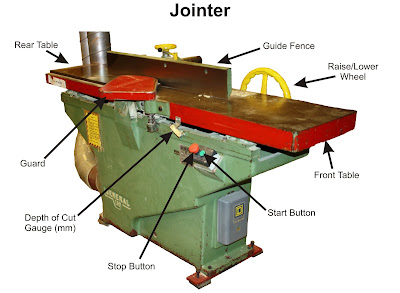
After we print this our on coral in black & white, and Mr. Vye will label the parts for us. Then we will have to edit the picture again labelling the parts for a good copy.
Monday, February 1
'Can The Web Save Papers' - Opinion Post
You don't have to go out to the store in the cold weather or rainy weather. Even during a storm you wouldn't have to worry about going out. Going out means you might get a paper or just miss the last one. You can just open up your iSlate and buy the paper online.
Instead of wasting paper on some of the articles you don't read, like the sports, you can just skip it on your iSlate. Less harmful for the environment again.
The more iSlates mean less papers used to print in factories. Also means less pollution coming from the factories. Instead of people littering their papers on the sidewalks or benches, they'll use their iSlate.
I think this device will save a lot of paper and save the environment more, but should also be concerned about hackers and viruses that may attack these pages.